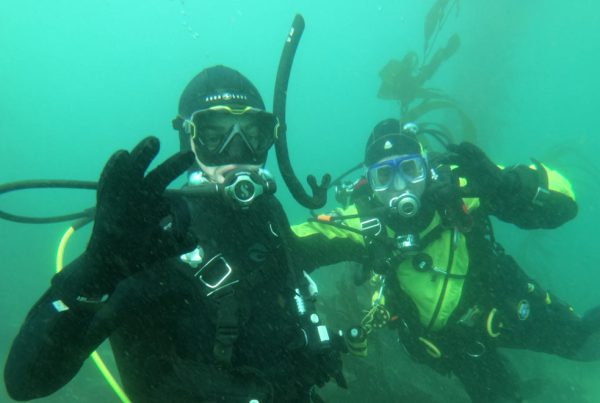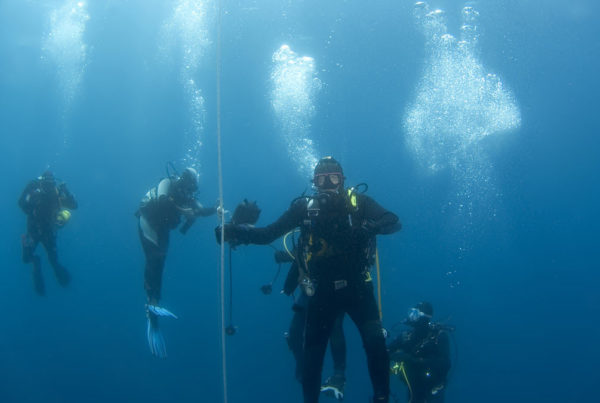We all know we are supposed to dive with a buddy, right? But you find yourself on a dive boat alone and having to pair up with somebody new that you have never dived with before. Sure, you can usually do it safely, but there are certain steps you should take to ensure maximum safety and for full enjoyment from both members of the buddy team.
First, know and understand each other’s experience level. While this will definitely affect your dive plan, there is usually no problem of an experienced diver diving with a beginner so long as the experienced diver understands the beginner’s limitations. This can become particularly evident in difficult situations such as dark water, overhead environments, currents, or deep dives.
Agree on the goals of the dive. A photographer is highly unlikely to get along underwater with a spearfisher. That is obvious. But just as incompatible could be two photographers, one shooting macro and the other wide-angle. The same is true for a scallop hunter and a lobster hunter. Both divers need to fully understand what the other wants to do and accomplish on the dive.
Who is going to lead and who is going to follow? While this is not always necessary, it generally works best especially with new buddy teams. And in what way is the follower going to follow? Side by side is best.
Before getting in the water set up a dive plan. Know the currents and plan appropriately. Discuss the likely bottom profile, maximum depth and an idea of what kind of compass course you will be running. At what point will you be heading back to the boat or shore (in terms of air consumption or bottom time)? In the case of beach diving, formulate your plan on getting through the surf.
Discuss basic communication — go this way, up, down, how much air, low on air, etc. Emergency signs are especially important.
What is going to be your emergency procedures? How about missing buddy procedures?
Suit up and, being a good buddy, help each other into your gear. Fully know and understand your buddy’s gear function and configuration. And just as important, make sure your buddy understands your gear. What is their weight arrangement? Is it integrated or a belt? How are the weights released? Know their set up for an alternate air source—safe second and/or pony bottle. How is the alternate air source accessed? Be familiar with each other’s BCD operation—inflation, dump valve, etc. Don’t ignore dry suit operation as well. Take a look at each other console/computer set-up.
Final checks before hitting the water will include a tight tanks strap, quick-connects in place, twisted straps, weight belts clear and free to fall if needed, and, of course, air on.
When it comes right down it, pre-dive buddy planning and checks only take a few minutes but can add immensely to both safety and enjoyment of you and your buddy’s underwater experience.









